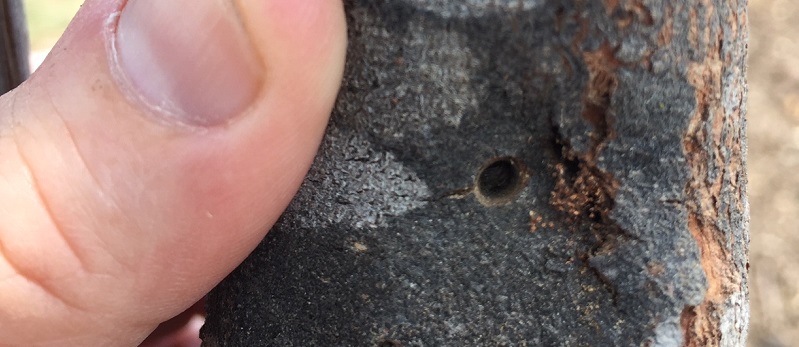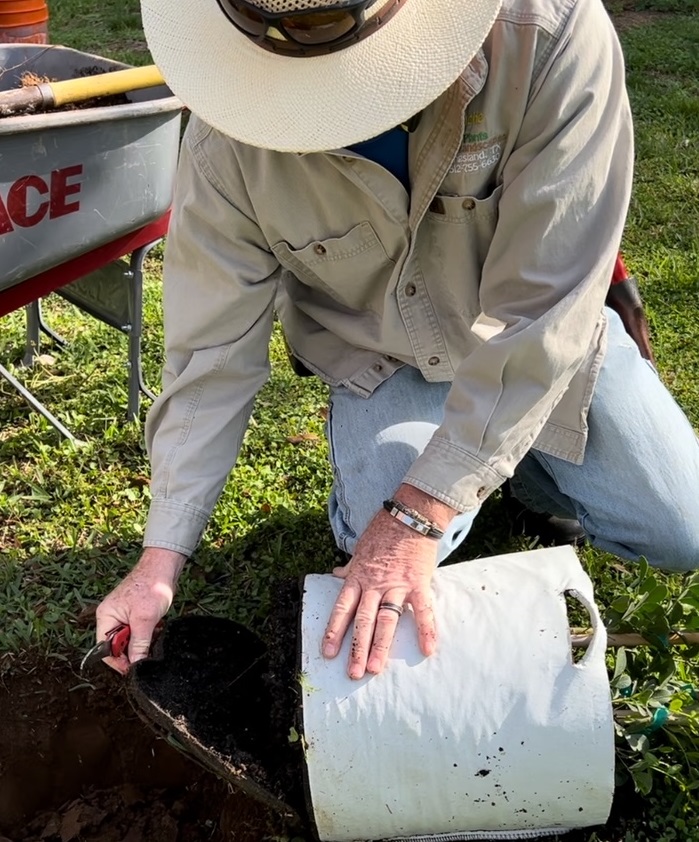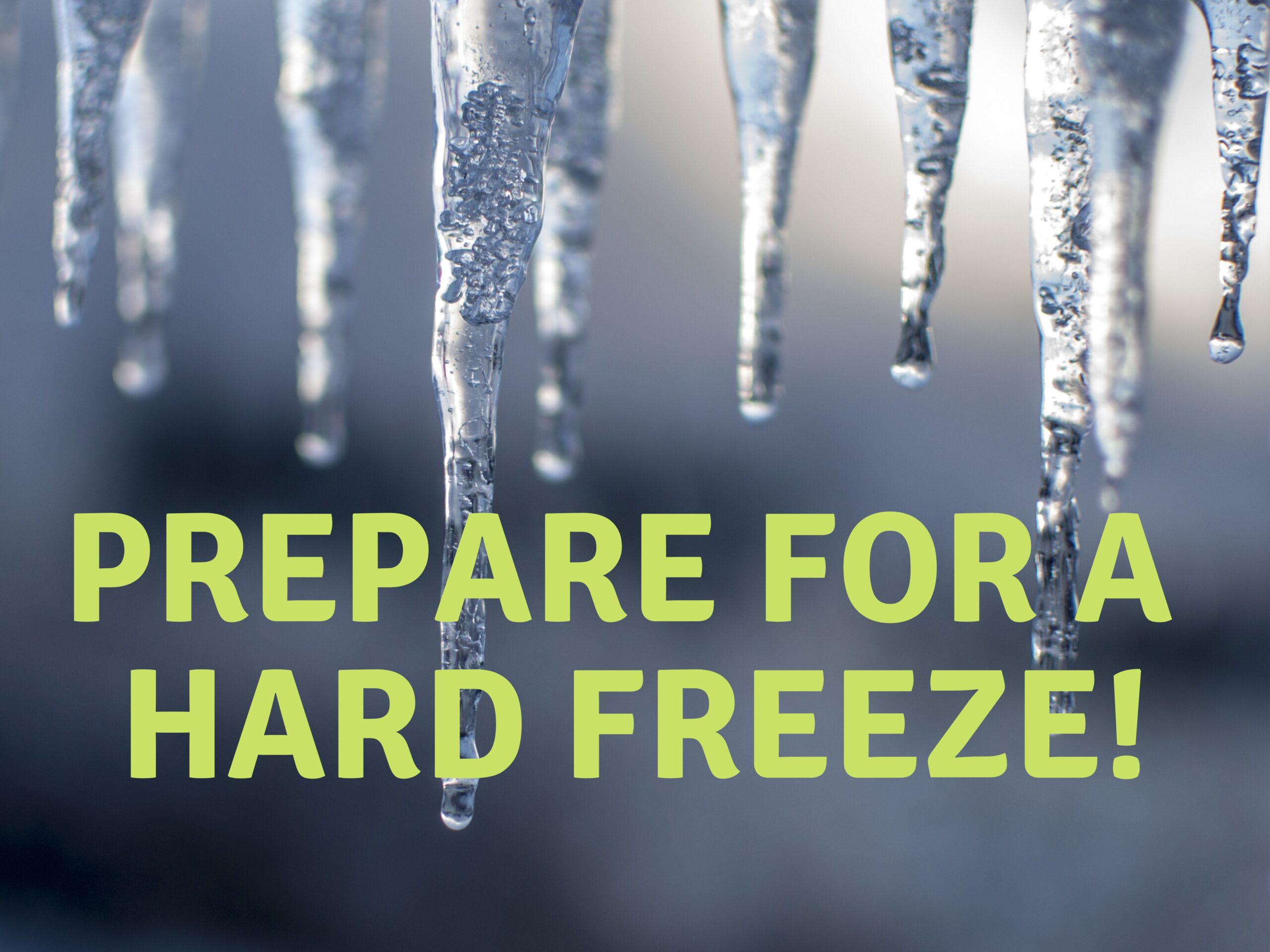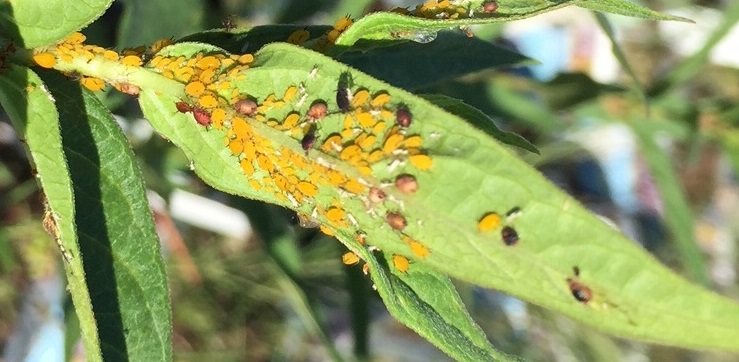Tree Borers
Many tree boring insects are attracted to weakened, damaged, dying or dead plants. They are referred to as “secondary invaders” because they attack a plant only after it has been weakened by stress or injury. Wood boring insects that attack living, healthy trees are known as “primary invaders”, and may eventually kill trees. It is important to differentiate the two when implementing borer control methods.
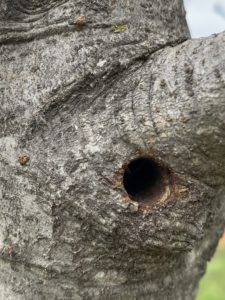
Borer infestations usually go unnoticed until the tree shows external signs of damage, such as browning leaves or dying branches. The holes on the trunks are round, oval or semi-circular, and often have sawdust below them (frass). The insects can be the larvae of beetles, weevils or moths.
Preventing Tree Borers
Since most wood-boring insects are secondary invaders, preventing infestations involves keeping the tree healthy by practicing good horticultural practices.
- Choosing and preparing an appropriate planting site for your tree to avoid stress, poor drainage, or too dry conditions.
- Minimize stress by proper watering and fertilization.
- Avoid injury to trunks from lawnmowers and weed eaters.
- Properly thinning and pruning during the colder months.
- Removing and destroying infested, dying and damaged branches, including fallen limbs.
Some borers damage trees by tunneling through the inner bark layer, destroying the xylem that transports water to the leaves. If the inner bark layer (cambium) is completely girdled, the tree eventually dies above the damaged site. Partial girdling reduces plant growth and vigor, sometimes causing death of branches and limbs. Removal and destruction of these infested parts is essential in controlling this pest.
The Red Oak borer is a common pest of oak and maple trees. The adults lay eggs in the bark crevices in July and August. Larvae hatch and tunnel under the bark and into the heartwood. Infested trees can be identifies by the frass (sawdust/excrement) near the larvae entrance. Red oak borers feed for more than a year before they pupate in chambers tunneled into the heartwood, emerging as adult borers in July and August, thus starting the cycle again.
Treating Tree Borers
Once infested, non chemical control of borer infested trees is limited. Removal and disposal of heavily infested trees or limbs is one option. Damage sites may also be closely inspected to determine if the larval stage may be extracted from the tree with a pocket knife, wire, or other suitable tool.
It should be noted that continually stressed trees will continue to be re-infested repeatedly, and will need to be continually treated. Efforts should be made to reduce stress on these trees to improve overall health.
Success rate with chemical controls will be dramatically enhanced by timing the treatment to match adult activity, making sure coverage is complete, and treating trees that are especially at risk of infestation.
Insecticides are most effective when adults are emerging and eggs are hatching. For most beetles, the adult egg-laying period is either very long, or unknown. These trees are best protected with a preventative systemic insecticide drench in the spring.

Fertilome Tree and Shrub Drench with Imidicloprid should be applied two to three months before the expected infestation, with application made about the time the tree is leafing out. If the soil is dry, water it well the night before application of the insecticide. The product will be taken up in the vascular system of the tree to provide year long protection.
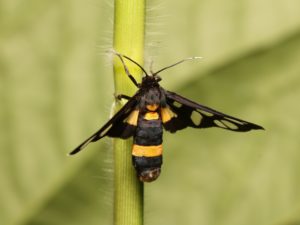
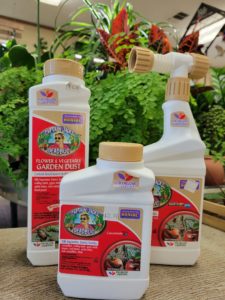
For the peach tree borer, a single surface application of a contact insecticide such as Captain Jack’s Deadbug Brew in late August or early September can prevent infestations on Prunus species. As always, read label instructions on rates of application and specific instructions on application practices.
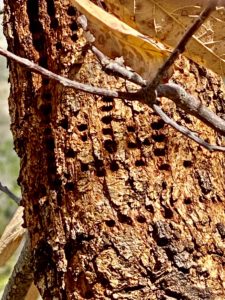
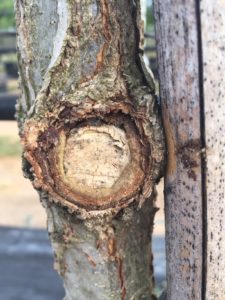

Trees at risk of infestation are highly-valued landscape trees, newly transplanted trees, or trees stressed by fresh pruning wounds, mower or string trimmer damage, sapsucker damage, or broken branches.
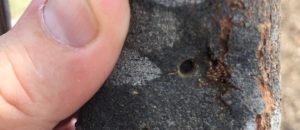
Trees already infested by borers may not be helped by insecticide treatment, as the damage they have already done may be enough to weaken and gradually kill the tree. Many times the stress factor preceding the borer infestation should be used addressed at the same time as the chemical control, further helping the tree recover.

